Intro: Why Homemade Baby Food is a Game-Changer
How to make baby food there’s something extraordinary about viewing your infant’s first bite of solid food. It’s a turning point filled with curiosity, tiny expressions of surprise, and sometimes, the biggest smiles. But as moms and dads, that moment also includes a question: What precisely is going into my infant’s little body?
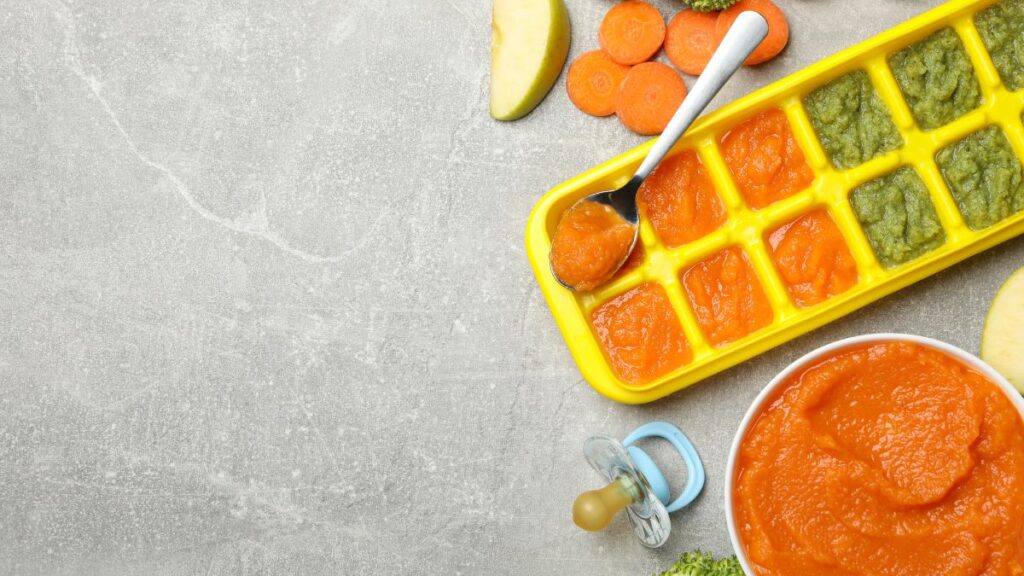
Homemade infant food uses a response that feels both reassuring and empowering. Every puree, mash, or small finger food becomes a building block of health and trust.
Unlike numerous store-bought alternatives, which might contain covert preservatives or added sugars, homemade child food offers you total control. It’s not simply food– it’s a way of introducing your baby to a world of wholesome eating routines that can last a lifetime.
The Benefits of Making Baby Food at Home
Freshness You Can Trust
Children thrive on freshness. When you puree a pear, mash a sweet potato, or blend a banana at home, you’re serving food at its peak vigor. Your baby learns to like flavors naturally, not dulled by processing.
Expense Savings That Add Up
Baby food aisles can be shockingly costly. One sweet potato can yield several servings of puree at a fraction of the price.
Customizing Flavors to Your Baby’s Preferences
Every infant is unique. Making food at home allows you to play chef– introducing flavors one at a time, combining them artistically, and even reintroducing those your little one initially rejects.
Getting going: What You Need Before You Begin
Must-Have Tools and Equipment
You don’t require a professional kitchen to make infant food. A few dependable tools go a long way:
- A blender, food processor, or a simple hand masher for purees.
- A sharp knife and durable cutting board for prepping fruit and vegetables.
- A cleaner basket or small pan to cook veggies gently.
- Measuring spoons and little bowls for mixing and portioning.
With these fundamentals, you can create healthy meals without fuss.
Choosing the Right Storage Containers
Once the food is prepared, correct storage is key. Freezer-safe alternatives provide flexibility, letting you prepare food in batches without worrying about wasting.
Security and Hygiene Essentials
When preparing food for infants, tidiness is non-negotiable. Wash your hands thoroughly, sterilize utensils, and ensure your cooking area surfaces are spotless. Always rinse vegetables and fruits under running water, even natural ones. And keep in mind that raw meat, poultry, or eggs should never come into contact with surfaces utilized for baby food preparation.
Selecting the very best Ingredients for Baby Food
Fresh Fruits That Babies Love
Fruits are typically a baby’s first love. As your child grows, you can expand to blueberries, mangoes, and even kiwi for adventurous taste buds.
Vegetables Packed With Nutrients
Vegetables present earthy flavors and a spectrum of vitamins. Carrots and sweet potatoes are naturally sweet and rich in beta-carotene. Zucchini and peas are moderate yet nutrient-dense, making them terrific starter veggies. Spinach and broccoli can be presented gradually– these powerhouses are teeming with iron and fiber; however, they may require matching with sweeter foods.
Whole Grains for Tiny Tummies
Entire grains sustain your child’s body with slow-releasing energy. Oats are flexible and mild, while brown rice adds bulk to purees.
Proteins for Growing Muscles
Protein lays the structure for development. Lentils and chickpeas are soft, nourishing alternatives when cooked well. Poultry like chicken and turkey can be pureed as soon as they are prepared, offering iron and vital amino acids. Later, you can introduce fish (with caution and approval from your pediatrician) for omega-3 fats that support brain development.
When to Introduce Baby Food Stages
Comprehending Stage 1: Smooth Purees
Between 4 and 6 months, babies are typically ready for their first taste of solids. The objective isn’t just nutrition– it’s teaching your infant how to swallow something new.
Relocating to Stage 2: Chunkier Blends
Around 7- 8 months, infants often long for more texture. This is the ideal time to present thicker purees and combinations of two or more components. For instance, mixing carrot and apple or sweet potato with peas adds complexity to their palate.
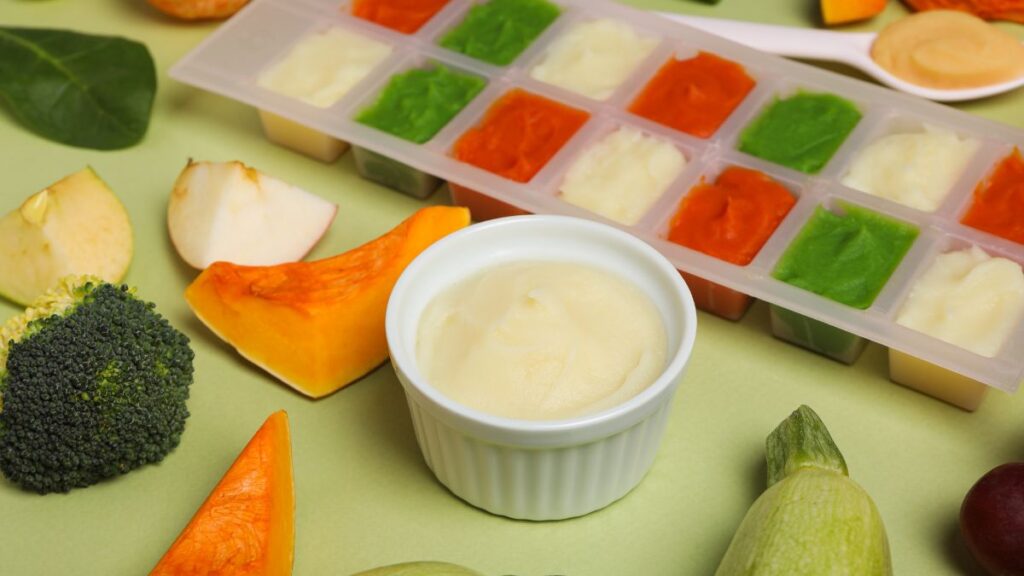
Stage 3: Finger Foods and Beyond
By 9- 12 months, lots of infants aspire to self-feed. Soft finger foods like little pieces of avocado, banana portions, or cooked pasta are perfect. This phase builds self-reliance, coordination, and confidence with food.
How to Make Baby Food Purees Step by Step
Prepping and Cleaning Ingredients the Right Way
Start with fresh, ripe produce—slice into little pieces for quicker, even cooking.
Boiling vs. steaming: What Works Best.
Steaming is the gold standard for infant food. If you boil, use very little water, and mix it with the cooking liquid to regain lost nutrients.
Mixing to the Perfect Texture
Transfer the cooked components into a blender or processor. Mix up until silky smooth for novices. As your infant grows, pulse less often to develop chunkier blends. Add water, breastmilk, or formula for a creamier consistency until you reach the desired texture.
Innovative Baby Food Flavor Combinations
Creamy and sweet Fruit Medleys
Babies adore fruit blends. Try a banana with peach for a tropical burst, or an apple with blueberry for a tangy pleasure. These blends are naturally sweet without being sugar-coated.
Savory Veggie Mash-Ups
Sweet potato and peas form a hearty, nutrient-rich combo. Zucchini and carrots mix into a discreetly savory dish that introduces brand-new tastes without overwhelming.
Fun Mixes of Veggies and Grains
Pair oatmeal with pumpkin for a comfortable, autumn-inspired puree. Quinoa with broccoli delivers protein and fiber, creating a filling meal for growing hunger.
Unanticipated Flavors Babies Enjoy
Don’t underestimate your child’s daring side. Avocado with banana is a creamy surprise. Pear with spinach presents greens in a way that’s friendly and yummy.
Batch Cooking Baby Food Without Stress
Time-Saving Tips for Busy Parents
Reserve one or two days every week to prepare bigger batches. Prepare multiple ingredients simultaneously, then portion and store for later. Use the oven or cleaner to manage numerous foods all at once.
How to Freeze and Thaw Safely
Freeze purees in silicone ice trays. When they’re strong, pop the cubes into labeled freezer bags. Defrost overnight in the fridge, or place a cube in a heat-safe dish and warm gently in hot water before serving.
Organizing Baby Meals for the Week
Label containers with the date and kind of puree. Turn flavors throughout the week so your infant experiences a range. An organization not just conserves time but also avoids waste.
Serving and storing Baby Food Safely
Freezer-Friendly Storage Ideas
Portion sizes matter. Little glass jars, silicone pouches, or stackable trays work magnificently. Constantly leave space at the top for expansion during freezing.
Properly Reheating Baby Food
Avoid microwaving directly, as it can develop dangerous hot spots. Instead, place containers in hot water or carefully heat on the stove, stirring well before serving.
Serving Sizes for Different Ages
Start with one to two teaspoons for newbies. Boost slowly as your child’s appetite grows, approaching two to four tablespoons by the time they consume regularly.
Avoiding Common Mistakes in Baby Food Making
Skipping Salt and Sugar for Health
Infants’ kidneys aren’t all set for included salt, and sugar can foster unhealthy cravings. Rely on the natural flavors of veggies and fruits to please their taste.
Understanding Which Foods to Delay
Particular foods– like honey, whole nuts, and cow’s milk– need to wait till after your child’s very first birthday. They can pose health threats ranging from allergic reactions to choking dangers.
Expecting Allergic Reactions
Present brand-new foods one at a time, leaving three to four days between additions. This mindful method assists in determining any allergic reactions or level of sensitivities.
How to Make Baby Food Fun for Your Baby
Turning Mealtime Into Playtime
Children enjoy interaction. Use ridiculous noises, colorful spoons, and motivating smiles. Deal with mealtime as an adventure, not a task.
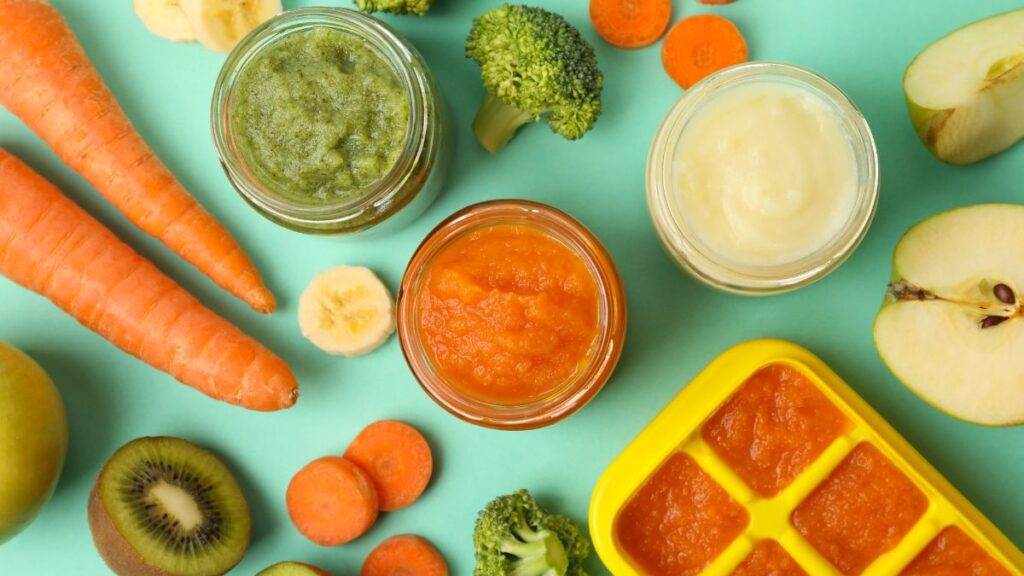
Presenting New Colors and Textures
Deal a rainbow of foods: orange carrots, green peas, purple sweet potatoes. Bright visuals stimulate interest and set the stage for long-lasting gratitude for variety.
Encouraging Self-Feeding Skills
Provide safe finger foods as your child grows. This not only develops fine motor abilities but also fosters self-reliance and self-confidence.
Motivation for Seasonal Baby Food Recipes
Springtime Bright and Fresh Purees
Commemorate spring with peas, asparagus, and strawberries. These tastes are light, rejuvenating, and loaded with nutrients.
Summer Season Fruits Full of Sunshine
Mangoes, peaches, and watermelon embody summertime sweet taste. They’re hydrating, scrumptious, and simple to puree.
Cozy Fall Veggie Blends
Pumpkin, sweet potato, and apple purees offer warmth and convenience. Perfect for cold evenings.
Winter season Warm and Comforting Dishes
Parsnips, carrots, and pears make hearty blends that soothe throughout cold months. These foods deliver energy and resilience.
Tips for Picky Eaters and Food Refusals
Mild Ways to Reintroduce Rejected Foods
Perseverance is essential. Reintroduce a declined food in various types– a puree today, a finger food tomorrow.
Mixing Old Favorites With New Flavors
Mix a reliable favorite, like apple, with something less familiar, like spinach. The familiar taste encourages acceptance.
Keeping Mealtime Stress-Free and Positive
Never force-feed. Keep the state of mind light, encouraging, and pressure-free. Infants pick up disappointment– positivity goes a long way.
Travel-Friendly Baby Food Ideas
Packing Homemade Purees for On-the-Go
Use insulated bags and freezer packs to keep food fresh. Small silicone pouches are portable and leak-proof.
Shelf-Stable Snacks That Work in a Pinch
Homemade oat bars, rice cakes, or freeze-dried fruits are ideal fellow travelers. They need no refrigeration and satisfy the appetite quickly.
Keeping Baby Food Safe While Traveling
Follow the two-hour guideline: never let disposable food sit at room temperature for more than two hours. When in doubt, toss it out.
Making Baby Food a Family Affair
Letting Siblings Join the Process
Older children enjoy being helpers. Let them wash produce, mash bananas, or stir purees. This cultivates bonding and team effort.
Creating Family Recipes Adapted for Baby
Cook family meals, then reserve a part for your baby. Blend or mash as needed. This creates inclusivity and conserves time.
Structure Positive Food Memories Early
Sharing mealtime as a household lays the foundation for lifelong healthy habits. It’s not almost nutrition; it’s about connection.
Sustainable Baby Food Practices
Using Local and Seasonal Produce
Buying regional decreases carbon footprints and guarantees fresher active ingredients. Farmers’ markets are treasure chests for seasonal fruit and vegetables.
Reducing Food Waste in Baby Meals
Strategy meals mindfully. Freeze leftovers, use soup scraps, and cook little batches to decrease waste.
Eco-Friendly Storage Solutions
Change single-use plastics with multiple-use silicone bags, glass jars, or stainless steel containers. A small change develops an enduring effect.
Budget-Friendly Baby Food Hacks
Smart Grocery Shopping for Baby Ingredients
Buy in-season produce– it’s more affordable and tastier. Frozen vegetables are equally nutritious and often more economical.
Repurposing Leftovers Into Baby Meals
Last night’s steamed veggies can be today’s puree. Cook once, serve two times– it saves money and time.
Budget-friendly Superfoods for Babies
Lentils, oats, spinach, and eggs provide extraordinary nutrition without breaking the bank.
Transitioning From Purees to Family Meals
Signs Your Baby Is Ready for More Texture
Every child’s feeding journey unfolds at its own rhythm, yet subtle hints indicate readiness for a bit more intricacy at mealtime. One of the first signs is eagerness– leaning forward, opening broad, and revealing authentic excitement when food is mentioned. A smooth puree might no longer please; your child may press it around, spit it out, or yearn for something with more compound flavors.
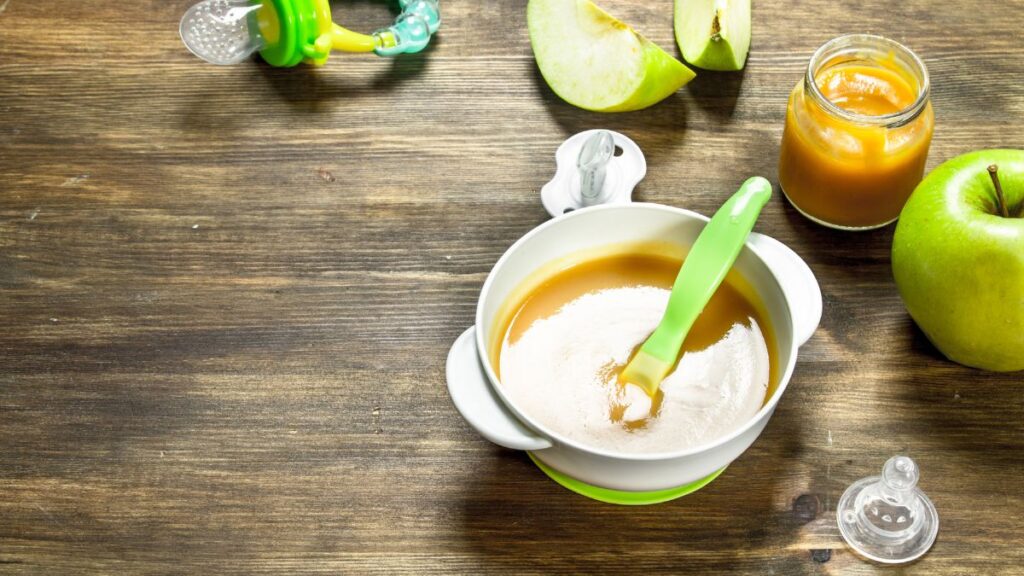
If your little one can move food from front to back without gagging, it’s time to experiment with thicker blends. For those checking out how to make infant food, this stage is about balance– keeping tastes familiar while including gentle resistance for gums to practice.
Hand-to-mouth coordination likewise blossoms during this stage. Children might grab spoons, reach for finger foods, or attempt to self-feed. These efforts, though unpleasant, are essential milestones in fostering self-reliance.
When introducing more texture, it must always be steady and mindful. By observing these signals, moms and dads can confidently shift from smooth spoon-fed meals to richer, more varied dishes that nurture growth and interest.
How to Introduce Family Meals Safely
Start with soft, bite-sized pieces from your own meal. Avoid salty, spicy, or sweet dishes.
Making the Shift Without Stress
Transition slowly. Mix less, mash more, then move to soft finger foods. Commemorate progress, no matter how little.
Professional Tips From Pediatric Nutritionists
Stabilizing Nutrients for Baby Growth
Ideally, every meal must balance carbohydrates, proteins, healthy fats, and vitamins. Range ensures correct advancement.
Avoiding Hidden Choking Hazards
Regarding feeding little ones, security is just as essential as taste. Numerous harmless foods can become serious choking threats if not prepared with care.
Moms and dads exploring how to make baby food often concentrate on nutrition; however, texture and shape deserve equal attention. Purees must be silky smooth for novices, while soft finger foods must be cut into small, manageable pieces as babies progress. Avoiding extremely hard or sticky foods helps in reducing the chance of unforeseen blockages.
Easy adjustments– cutting in half grapes lengthwise, mashing beans completely, or shredding meats– can change risky items into safe, nutrient-rich bites. Taking note of part size also matters, as even healthy foods can overwhelm a kid’s respiratory tract if they are too big.
Feeding needs to be a cheerful experience, not a stressful one. With thoughtful preparation, mealtime becomes both safe and pleasurable. By integrating alertness with imagination in the kitchen area, parents can offer scrumptious, nourishing alternatives without covert dangers lurking on the plate.
Encouraging Healthy Eating Habits Early
Exposing babies to varied foods early on. Repeated exposure decreases fussiness and helps construct adventurous eaters.
Regularly Asked Questions About Homemade Baby Food
For How Long Does Homemade Baby Food Last?
In the fridge, approximately three days. In the freezer, approximately 3 months. Always label and date containers.
Can You Mix Breastmilk or Formula Into Purees?
Absolutely. It adds nutrition and comfort with a familiar taste your baby acknowledges.
Which Foods Should Be Avoided in the First Year?
Honey, cow’s milk, whole nuts, added salt, and sugar must wait until after the first birthday. These can pose health threats.
Conclusion: Fresh, Simple, and Nourishing Baby Food for Every Stage
Making baby food in your home isn’t just about nutrition– it’s about love, care, and existence. With fresh components, thoughtful preparation, and a touch of imagination, you’re shaping more than meals– you’re shaping habits, memories, and health that can last a lifetime.
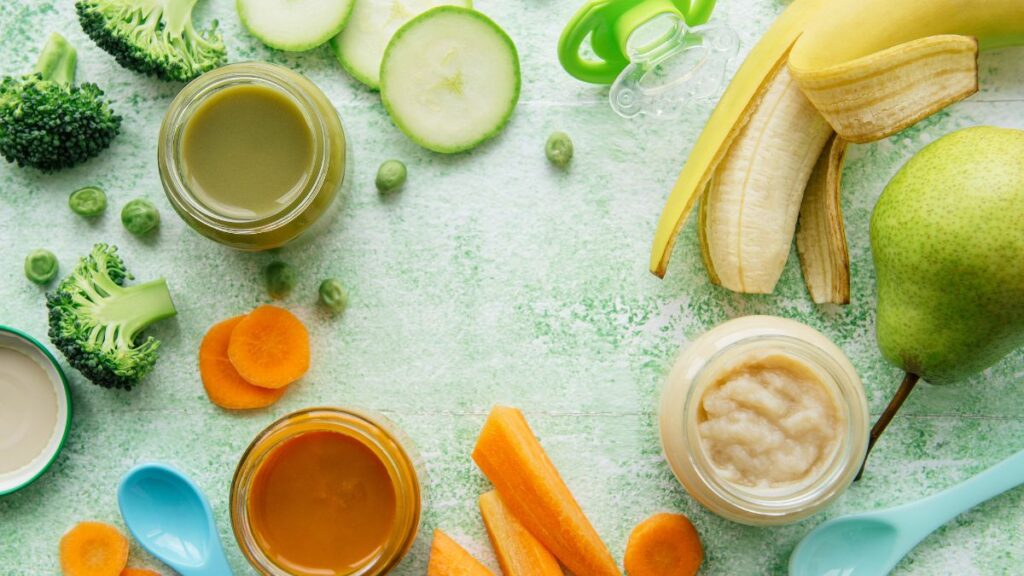
Homemade baby food is budget-friendly, sustainable, and deeply rewarding. From the first spoonful of smooth puree to the happy chaos of finger foods, each phase is a chance to support your baby’s development in the most personal way possible. With every bite, you’re saying: I take care of you, I want the best for you, and I’m here every step of the way.
There’s something extraordinary about viewing your child take their very first bite of solid food. Homemade infant food offers a response that feels both empowering and reassuring. It’s not simply food– it’s a method of introducing your infant to a world of wholesome eating routines that can last a lifetime.
Steaming is the gold standard for baby food. Purees must be silky smooth for beginners, while soft finger foods should be cut into small, workable pieces for infants’ development.
<script type="application/ld+json">
{
"@context": "https://schema.org",
"@type": "BlogPosting",
"mainEntityOfPage": {
"@type": "WebPage",
"@id": "https://pinmebaby.com/how-to-make-baby-food-with-fresh-ideas-2025/"
},
"headline": "How to Make Baby Food With Fresh and Simple Ideas 2025",
"description": "How to make baby food there’s something extraordinary about viewing your infant’s first bite of solid food. It’s a turning point filled with curiosity, tiny expressions of surprise, and sometimes, the biggest smiles. But as moms and dads, that moment also includes a question: What precisely is going into my infant’s little body?",
"image": "https://pinmebaby.com/wp-content/uploads/2025/09/how-to-make-baby-food-3.jpg",
"author": {
"@type": "Person",
"name": "Shokhina Begum",
"url": "https://pinmebaby.com/about-us/"
},
"publisher": {
"@type": "Organization",
"name": "Shokhina Begum",
"logo": {
"@type": "ImageObject",
"url": "https://pinmebaby.com/wp-content/uploads/2025/09/cropped-pinmebaby.jpg"
}
},
"datePublished": "2025-09-13",
"dateModified": "2025-09-13"
}
</script>
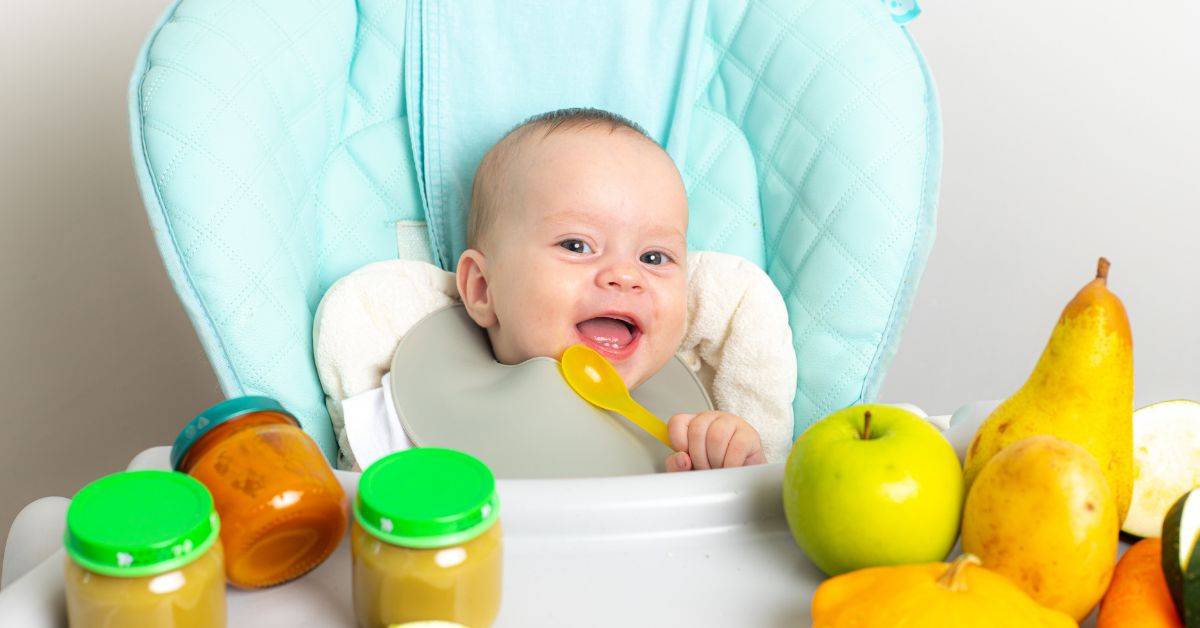
88kaxx
56ea6i
dhkih2